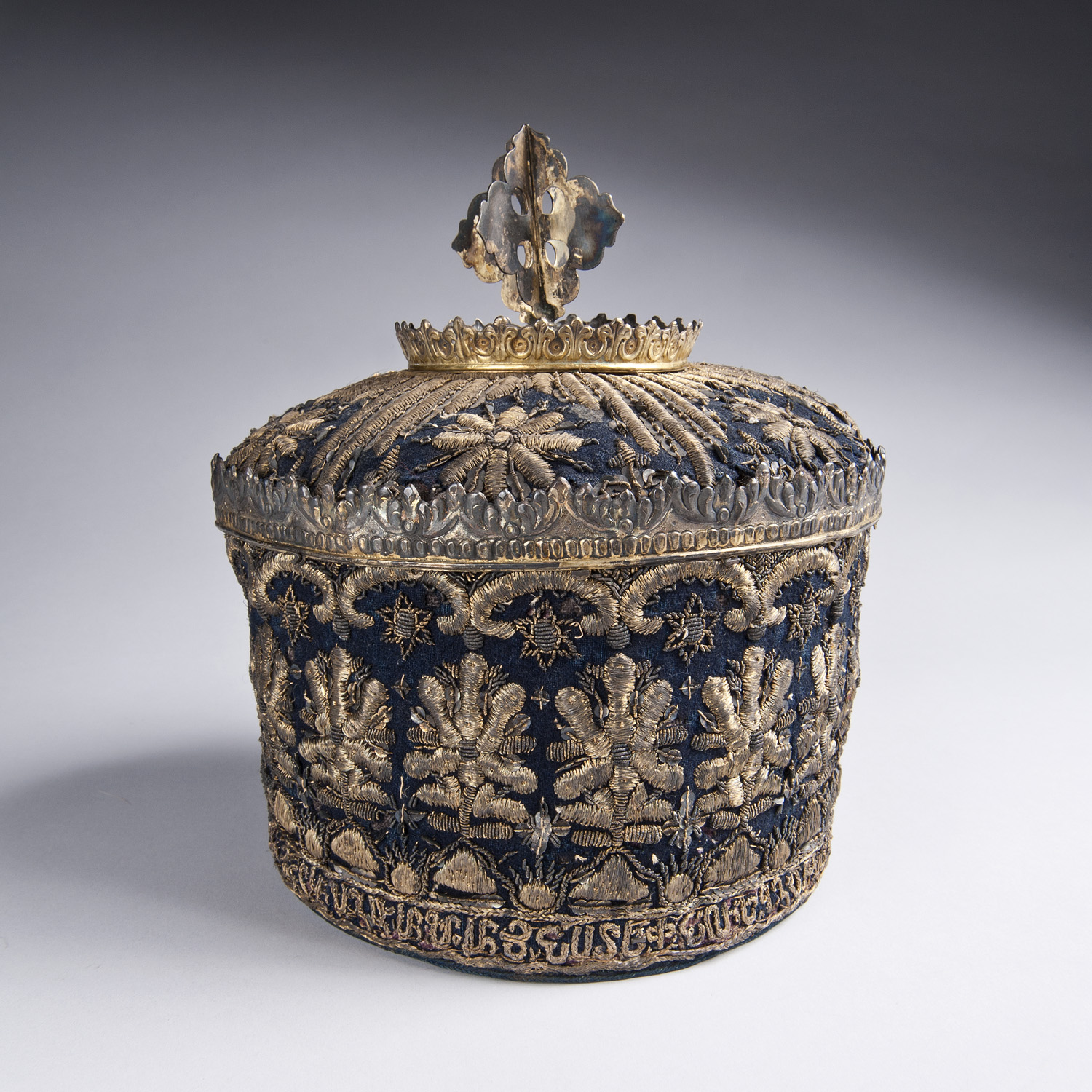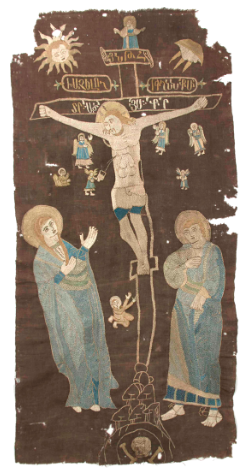Bringing an Exhibition to Life, from Conception to Completion
Beginning in January, I and nine other students in Professor Christina Maranci’s seminar “The Threads of Survival: Armenian Liturgical Textiles” began our research into a rich group of Armenian liturgical textiles held at the Armenian Museum of America and the Museum of Fine Arts—and last Thursday, we finally had the chance to share the results of our hard work with the Tufts community! Our research last spring has culminated in an exhibition titled Connecting Threads / Survivor Objects, on view at the Tufts University Art Galleries through December 5. I know I don’t just speak for myself when I say that contributing to this project, from conception to completion, has been incredibly rewarding.

Armenian liturgical textiles encompass a huge variety of uses, materials, iconographies, and artistic techniques: objects featured in Connecting Threads / Survivor Objects include a nineteenth-century silk shurchar (priest’s robe) that originated in an Armenian settlement in Surabaya, Indonesia, an intricately embroidered saghavard (liturgical crown) from 1751, two massive painted and block-printed altar curtains, and much more. As the exhibition’s description explains, these objects are highly valuable in that they “show the multidimensional nature of liturgical textiles and bear witness to the vitality of Armenian communities during the Ottoman Empire and their influence along global commercial routes,” and also because they exemplify “the survival of a people, its identity, and faith” against all odds. Most of these objects had never received proper scholarly attention until this year, and their public exhibition sheds much-needed light on their impressive materiality as well as their deep cultural value.
In Professor Maranci’s seminar last spring, each student chose one of the textiles set for exhibition to examine in depth. In addition to writing a research paper on our chosen objects, we also helped to write the wall labels and educational materials for the exhibition. My object—a fragmentary embroidery of the Crucifixion of Jesus Christ dating from the late eighteenth or early nineteenth century and held today at the MFA—was likely originally displayed at the altar of an Armenian church, where it would have encouraged worshippers to reflect on both the tragedy of the Crucifixion as well as the hope of salvation and eternal life it represented.

As a current graduate fellow for the Tufts University Art Galleries, I also contributed to Connecting Threads / Survivor Objects throughout the summer by drafting an educational guide to go along with the exhibition. The educational guide highlights four themes of the exhibition—Life / Afterlife; Network / Movement; Communities / Individuals; and Materials / Techniques—and presents some key questions that the objects on display invite us to consider. Participating in the exhibition as both a student researcher and a gallery fellow helped me to translate my in-depth work on a specific object into educational content that will (hopefully) appeal to a wide variety of visitors, a skill I will definitely carry with me into future curatorial experiences. I’m also in the process of helping to plan a few tours of the exhibition—check out the Gallery’s list of upcoming programs for more details!
Connecting Threads / Survivor Objects represents the culmination of the hard work and collaboration of undergraduate and graduate students, faculty, gallery staff, and more, and it has been so exciting to see the exhibition come to life. You can check out Connecting Threads / Survivor Objects in the Koppelman Gallery at the Tufts University Art Galleries from now through December 5—and if you’re not in the Boston area, you can also explore the exhibition through the Gallery’s mobile app!
